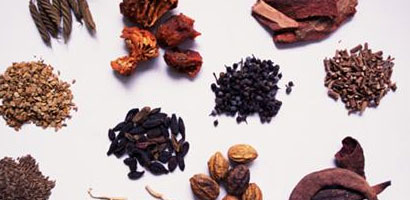Unani Medicine : Akhlaat
Humours refer to the fluid substance which is the initial product obtained from the digestion of food. The foundation of Humours are laid down by Hippocrates, wherein is is believed that all diseases were due to natural causes and the duty of the physician was to aid the natural forces of the body.
According to Avicenna, the Humours are - Primary and Secondary :
Primary Fluids: (Rutoobat-e-Oola) are called as AKHLAAT (Humour) which are four in number (Akhlaat-e-Arba) -
- Dam (Blood)
- Balgam (Phlegm)
- Safra (Bile)
- Souda (melancholic)
These Humours are derived from the digestion of food and are utilized as building materials for the growth and repairs of organs and to yield energy for work.
Secondary Fluids: These are either essential or excessive. There are the Intra-cellular and extra cellular fluids in the tissues of the body also called as Rutoobat-e-Arba. Essential fluids are those which, after suitable alteration, have entered the tissues but not integrated into the structure of the primary tissues.
They are- i) the intravascular (Mah soora) ii) the pre-cellular (Talliya) iii) the intra-cellular iv) the cellular
These Secondary fluids are also responsible for maintaining moisture for organs of the body and also to provide nutrition and protection to the organs of the body.
The dominance of each Humour is recognized from its characteristic colour and qualities, and also from the age and temperament of the disease as well as the individual, nature of food, tempo of activity and the prevailing season.
Once the diagnosis of humoural excess is reached to restore health, humours must be brought to the balance.
| Humour | Temperament |
|---|---|
| Khilt e dam (Blood or Sanguine) | Hot and Moist |
| Khilt e Balgham (Phlegm or Phlegmatic) | Cold and Moist |
| Khilt e Safra (Bile or Choleric) | Hot and Dry |
| Khilt e Souda (Black Bile or Melancholic) | Cold and Dry |
The humours themselves are assigned temperaments:
The origin of humours is derived from the digestion of food, and according to the Unani concept, there are four stages of digestion:
- Hazm-e-Medi (Stomach digestion) followed by and including Hazm-e-Mevi (Intestinal digestion). Food is converted into Daimoos (Chyme) and Kailoos (Chyle) and carried to Liver by Urooq-e-Masariqa (Mesentric Veins).
- Hazm-e-Kabidi (Liver digestion) In the course of this conversion process, Humours are produced. At this stage it is called Akhlaat-e-Kham, which is varying quantities in proportions, which depends upon the quality & quantity of food and digestion.
- Hazm-e-Urooqi (Vessel digestion) While in circulation, blood and its other Humours undergo a third digestion. The blood which leaves the liver intermixes with the other Humours, namely Balgham, Safra and Souda. This will be distributed to the organs through the divisions of vessels for the nutrition of the organs.
- Hazm-e-Uzwi (Tissue digestion) While the Humours are flowing, the blood vessel absorbs its nutrition by its Quwat-e-Jaziba (attractive power) and retains it by its Quwat-e-Masika (Retentive power). The Quwat-e-Hazima along with Quwat-e-Mushabbeha which converts into tissues after completion of the process of digestion and assimilation of humoural material. The waste material in humours at this stage is being excreted by a power known as Quwat-e-Dafia (expulsive power).







